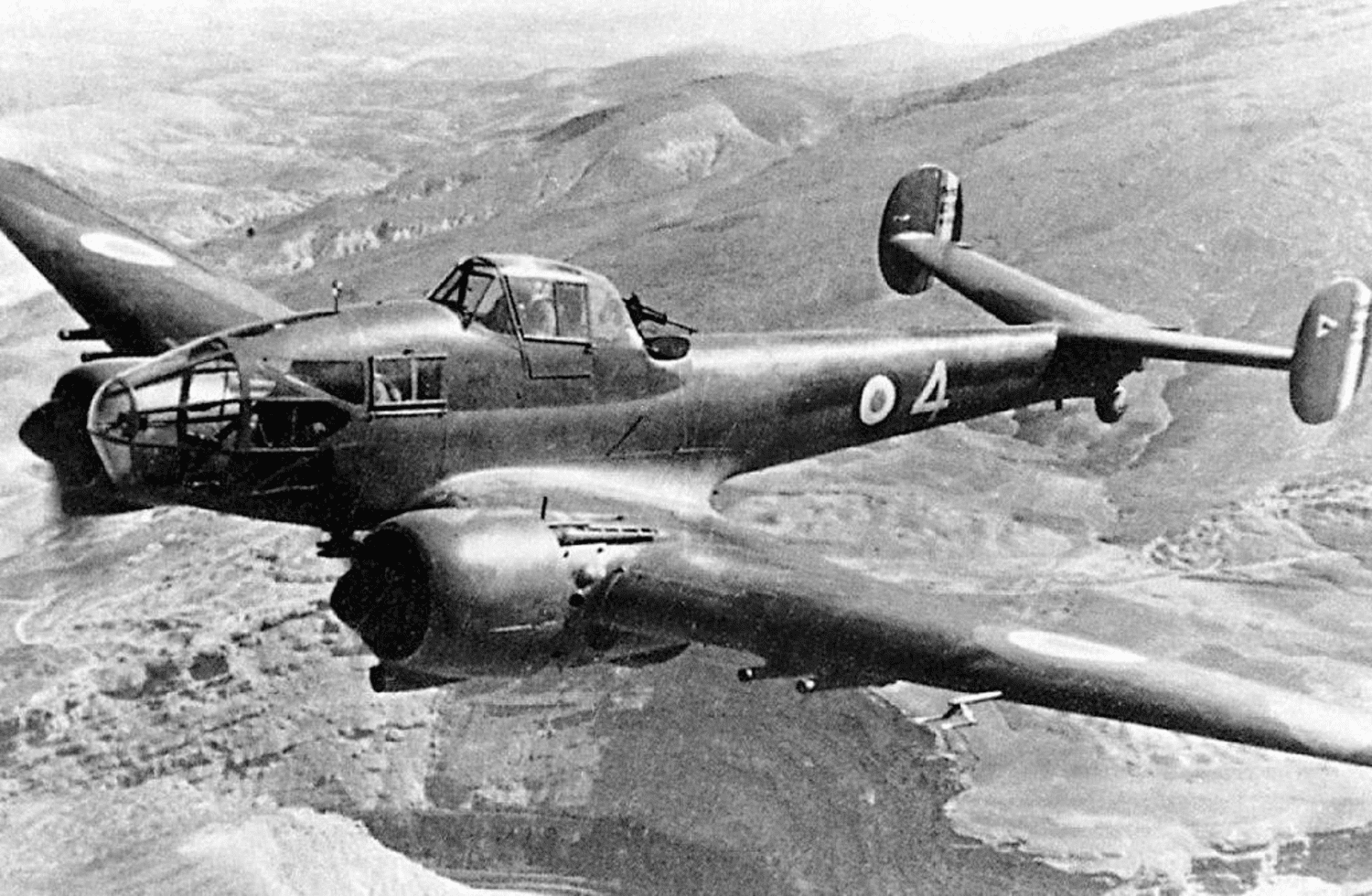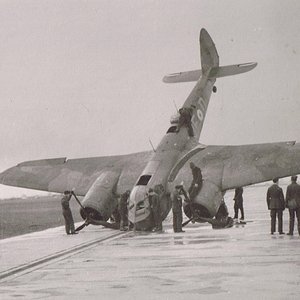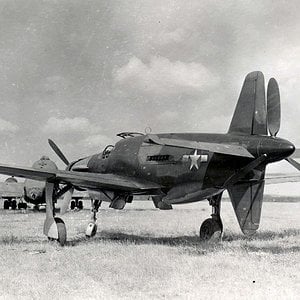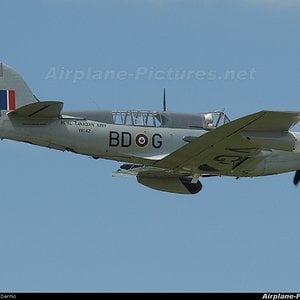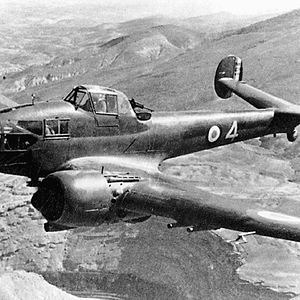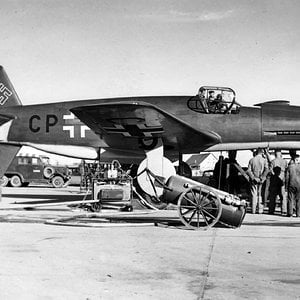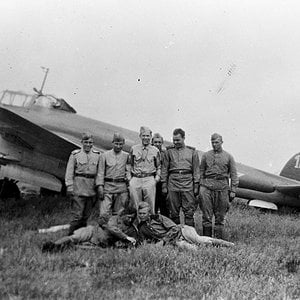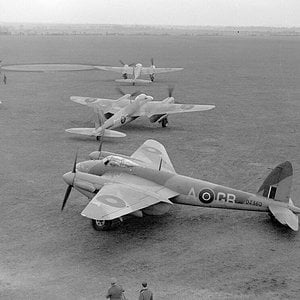Navigation
Install the app
How to install the app on iOS
Follow along with the video below to see how to install our site as a web app on your home screen.
Note: This feature may not be available in some browsers.
More options
You are using an out of date browser. It may not display this or other websites correctly.
You should upgrade or use an alternative browser.
You should upgrade or use an alternative browser.
The Potez 63 was a low-wing twin-engined monoplane with more than a passing resemblance to the Bf 110. Like the German aircraft it had a twin tail, a streamlined fuselage, and the cockpit was covered by a long greenhouse canopy. The wings were low-mounted. The short central section, between the fuselage and the engine nacelles had parallel leading and trailing edges and no dihedral, while the outer sections had a clear dihedral and straight edges that tapered towards a rounded point. The horizontal surface on the twin tail also had dihedral. The retractable undercarriage folded into the engine nacelles.
Potez chose to build a prototype of the 630, and work began on the Potez 630-01 in April 1935. The aircraft took almost exactly one year to build, and made its maiden flight on 25 April 1936. At this stage it had a wooden tail with no dihedral. The prototype was slightly damaged in a crash on 6 May, but was soon replaced and sent to Villcoublay for official trials on 3 August. After some early trials the wooden tail was replaced with the production model, and tests resumed in November. The engines were replaced twice, until the prototype was using the Hispano-Suiza 14 Ab 10/11 engines, which provided 640hp at sea level, 700hp at take off and 725hp at altitude. With these engines the fully loaded aircraft reached a top speed of 286mph.
The second prototype, the Potez 631-01, made its maiden flight in March 1937. This aircraft was powered by the Gnome-Rhone 14 Mars radial engine, which provided 570hp at sea level, 700hp at take off and 660hp at altitude. Although the Gnome-Rhone engines were less powerful, they were also smaller, and the Potez 631-01 was only 4mph slower than the 630-01.
Production of the aircraft actually began in May 1937, before the letter of intent had been issued. The fuselage and tails were built at Caudebec, the wings at Le Havre and the aircraft were assembled at Méaulte, then at Les Mureaux.
Next to be ordered into production was the Potez 637 reconnaissance aircraft, followed by the Potez 63.11 army cooperation aircraft. This version would be built in larger numbers than any other, accounting for three quarters of the total production run. The order for Potez 633s was soon cancelled, and turned into one for Potez 631s. The first production Potez 680 was completed in February 1938, and the type entered service late in 1938.
Only the Potez 631, Potez 637 and Potez 63.11 saw significant action during the Battle of France. The Potez 630 had been withdrawn because of engine problems and the Potez 633 was mainly used for training.
The Potez 637 was one of the more modern aircraft in the reconnaissance groups, but losses were heavy. Production of this variant was limited, and the Potez 63.11 played just as important role in these group. The Potez 63.11 was also the most important aircraft in the army co-operation units, where it suffered heavy losses, mostly to ground fire and on the ground (although managed to hold its own against German fighters). By 1940 the entire family was outdated, with the lack of engine power and thus speed being their main weakness, but slow production of the more modern aircraft designed to replace them meant that large numbers of French aircrew were forced to fight in members of the Potez 63 family.
The Potez 63 was made available for export in 1937, and a number of orders were received, although only two were even partly fulfilled. The Potez 633 B2 was the most popular export model. After the French Air Force cancelled its own order for the bomber variant, these export aircraft were the only ones to be constructed, and they served with the Armée de l'Air.
Five countries ordered aircraft from France: China ordered four Potez 631 C3s and five Potez 633 B2s. Greece ordered twenty-four Potez 633 B2s. Romania ordered twenty Potez 633 B2s in a first order and another twenty in 1938. Switzerland ordered one Potez 630 C3 and one Potez 633 B2s. Yugoslavia ordered two Potez 630 C3s and one Potez 631 C3. Finally Avia in Czechoslovakia arranged for licence production of the Potez 636 C3, but production had not got underway when Germany occupied the country.
From these orders Switzerland received its Potez 630. Yugoslavia received one of its Potez 630s, but the other, a dual control trainer, was retained in France.
Potez chose to build a prototype of the 630, and work began on the Potez 630-01 in April 1935. The aircraft took almost exactly one year to build, and made its maiden flight on 25 April 1936. At this stage it had a wooden tail with no dihedral. The prototype was slightly damaged in a crash on 6 May, but was soon replaced and sent to Villcoublay for official trials on 3 August. After some early trials the wooden tail was replaced with the production model, and tests resumed in November. The engines were replaced twice, until the prototype was using the Hispano-Suiza 14 Ab 10/11 engines, which provided 640hp at sea level, 700hp at take off and 725hp at altitude. With these engines the fully loaded aircraft reached a top speed of 286mph.
The second prototype, the Potez 631-01, made its maiden flight in March 1937. This aircraft was powered by the Gnome-Rhone 14 Mars radial engine, which provided 570hp at sea level, 700hp at take off and 660hp at altitude. Although the Gnome-Rhone engines were less powerful, they were also smaller, and the Potez 631-01 was only 4mph slower than the 630-01.
Production of the aircraft actually began in May 1937, before the letter of intent had been issued. The fuselage and tails were built at Caudebec, the wings at Le Havre and the aircraft were assembled at Méaulte, then at Les Mureaux.
Next to be ordered into production was the Potez 637 reconnaissance aircraft, followed by the Potez 63.11 army cooperation aircraft. This version would be built in larger numbers than any other, accounting for three quarters of the total production run. The order for Potez 633s was soon cancelled, and turned into one for Potez 631s. The first production Potez 680 was completed in February 1938, and the type entered service late in 1938.
Only the Potez 631, Potez 637 and Potez 63.11 saw significant action during the Battle of France. The Potez 630 had been withdrawn because of engine problems and the Potez 633 was mainly used for training.
The Potez 637 was one of the more modern aircraft in the reconnaissance groups, but losses were heavy. Production of this variant was limited, and the Potez 63.11 played just as important role in these group. The Potez 63.11 was also the most important aircraft in the army co-operation units, where it suffered heavy losses, mostly to ground fire and on the ground (although managed to hold its own against German fighters). By 1940 the entire family was outdated, with the lack of engine power and thus speed being their main weakness, but slow production of the more modern aircraft designed to replace them meant that large numbers of French aircrew were forced to fight in members of the Potez 63 family.
The Potez 63 was made available for export in 1937, and a number of orders were received, although only two were even partly fulfilled. The Potez 633 B2 was the most popular export model. After the French Air Force cancelled its own order for the bomber variant, these export aircraft were the only ones to be constructed, and they served with the Armée de l'Air.
Five countries ordered aircraft from France: China ordered four Potez 631 C3s and five Potez 633 B2s. Greece ordered twenty-four Potez 633 B2s. Romania ordered twenty Potez 633 B2s in a first order and another twenty in 1938. Switzerland ordered one Potez 630 C3 and one Potez 633 B2s. Yugoslavia ordered two Potez 630 C3s and one Potez 631 C3. Finally Avia in Czechoslovakia arranged for licence production of the Potez 636 C3, but production had not got underway when Germany occupied the country.
From these orders Switzerland received its Potez 630. Yugoslavia received one of its Potez 630s, but the other, a dual control trainer, was retained in France.

